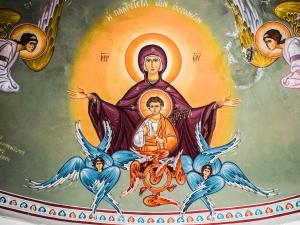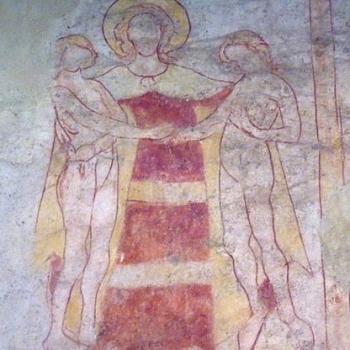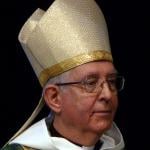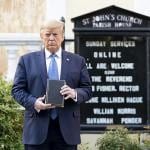For this article, I wish to respond to Matt’s criticism of my previous article. My goal in this part of the exchange is to unpack the following:
- Both Protestants and Catholics must address the silence concerning the veneration of the Saints (dulia) and the Virgin Mary (hyperdulia) in the earliest centuries of the Church, especially when compared to the 4th century and beyond.
- Matt’s contention that Gnostic and Hellenistic paganism infiltrated the early Church (4th century and beyond) and that this infiltration led to the accretion of Saint and Virgin Mary veneration has tenuous historical basis.
- John Henry Cardinal Newman’s case that veneration of the Saints (dulia) and the Virgin Mary (hyperdulia) grew organically out of the Church’s understanding of the Incarnation (in the 4th century) presents the clearest explanation given the historical date available.
- As a final point, I wish to demonstrate that the veneration of the Saints (dulia) and the Virgin Mary (hyperdulia) in no way contradict Scripture.
Seeing as this is not a comprehensive study about veneration, my aim focuses primarily on providing a more historical and reasonable source for the practice against Matt’s claim of possible Gnostic and Hellenistic pagan origin.
Restating St. Cardinal Newman’s Case
To start, allow me to restate St. Cardinal Newman’s case:
- Through the Incarnation, the Saints share in a measure of God’s glory (dulia).
- Also, through the Incarnation, the Virgin Mary, as Theotokos, shares in the glory of God to a higher degree than the glorified Saints (hyperdulia).
- The development of theology regarding the Incarnation in the 4th century contributed to the cult of the Saints and Virgin Mary, not pagan accretions.
Catholics honor and venerate the Saints and Virgin Mary because of the Incarnate Word of God in Christ. The practice gained prominence in the 4th century and beyond due primarily to a greater understanding by Christian thinkers on the ramifications of the Incarnation on redemption and the glorification of man. Therefore, this development happened organically from within, not from without via foreign Gnostic and Hellenistic pagan influences.
Addressing Matt’s Criticisms
Again, my sincere thanks go to Matt for taking the time to dialogue with me about this important topic. Below, I address some of Matt’s criticism of my claims.
Matt states:
I’m assuming that when Newman says “fit objects of worship” he doesn’t mean fit objects of latria. If he did, then the debate would be over. We all agree that latria is only rightly given to God.
To clarify, Newman here refers to honor or dulia, not latria (worship due to God alone). In his native England, solicitors (lawyers) refer to magistrates (judges) with the honorific “your worship.” In no way do these solicitors “worship” magistrates in the use of this title.
Matt continues:
…Dennis’s case amounts to a few historical data points tied together by Newman’s claim that they are tied together. Dennis tells us what he thinks but not why he thinks it. He doesn’t explain why we should take that account of historical (doctrinal) development to be true.
True, I did not provide an overabundance of data points in my appeal to St. Cardinal Newman’s claim connecting the Incarnation to veneration of the Saints and Virgin Mary. Why? Simple. An overabundance of evidence does not exist. Sure, the Church possesses an early-ish prayer to the Virgin Mary (mid-3rd century)…
Beneath thy compassion, we take refuge, O Mother of God: do not despise our petitions in time of trouble, but rescue us from dangers, only pure one, only blessed one.
Also, while some early Chrisian literature mentioned prayers to angels and saints (The Shepherd of Hermas standing as the earliest at 80 AD) and some grave inscriptions show the practice, most evidence dates from the mid-3rd century and beyond.
Finally, he asks…
Is your account of the development a better historical account of the doctrine we are discussing?
In short, I appealed to St. Cardinal Newman’s doctrinal development to show an explanation for the veneration of the Saints and Virgin Mary in continuity with the available evidence. Moreover, St. Cardinal Newman’s explanation best explains the acceleration of the practice after the 5th century.
Addressing Matt’s Criteria
Now, let’s take another look (and a deeper dive) into the criteria Matt lays out in addressing the issue of veneration. I address them one-by-one.
C1 – The Scriptures do not teach a normative doctrine of praying to saints.
This is a half-truth. Scripture contains plenty of examples of verbal exchanges with angels. For example, the Virgin Mary speaks with the angel Gabriel and the apostle John speaks to an angel in his Revelation. Furthermore, John also speaks to a deceased elder who addresses him in Chapter 7. Also, let’s not forget that the Catholic Church recognizes seven books Protestant’s reject. In one of these books (2 Maccabees), the deceased prophet Jeremiah “fervently prays for the people and the holy city…” This book also speaks of prayers for the dead. This may explain its exclusion from their canon.
C2 – The earliest mention of a practice that (as far as I can tell) is even close to this practice is in the 2nd century and it is denounced by Irenaeus as an evil practice of the Gnostics.
As mentioned above, 2 Maccabees mentioned this practice and it predates St. Irenaeus by three-hundred years. Furthermore, St. Irenaeus used the Septuagint (which includes 2 Maccabees) in Against Heresies. He appears entirely unaware of an “obvious” Gnostic or pagan practice of the dead praying for the living and praying for the dead in his own Bible.
C3 – Since this practice is not normatively taught in the Scriptures or in the first two centuries of the church, it’s fair to ask – Where did it come from?
See my response to C1 and C2.
C4 – Given Christianity’s explosive initial growth in a region bathed in Hellenistic culture, it wouldn’t be surprising if Greek thought contributed to ideas and doctrines held by Christians.
True. We see this positively reflected in the writing of St. Athanasius and other Church fathers in the 4th century as they dealt with how best to understand the Incarnation and Trinity. Conversely, the heretic Arius accused Trinitarians of using unbiblical language in their use of words like homoousion (of the same substance) to describe the Son’s nature as it relates to the Father within the Trinity. Should Christians abandon such words and ultimately side with those like Arius because these words originated in Hellenistic culture?
C5 – Finally, I offered one example, namely the gnostic view of a hierarchy of beings from the material world all the way up to “The One” with a feminine mother figure at the top of the hierarchy. I stated that Marian Christian cosmology and Marian devotion are not the same as what the Gnostics believed. I only brought it up as one example of potential parallels.
Granted, some potential parallels seem to exist here. However, I remain unconvinced unless presented with more convincing evidence, especially considering my responses to C1 and C2.
Dulia and Hyperdulia Do Not Contradict Scripture
Finally, I contend (in agreement with the Catholic Church) that dulia and hyperdulia do not contradict Scripture. Now, most Protestant interpretations of the Scripture disagree with his assertion. Please note that I did not state that Scripture clearly teaches dulia and hyperdulia, but only that dulia and hyperdulia do not contradict it. How so? Many Protestants think Catholics violate the practice of necromancy when they request prayers of the Virgin Mary and the Saints, as they consider such individuals dead. However, Catholics think those who exist in the heavenly presence of God are far more alive than Christians living on earth (Matthew 22:31-34). Furthermore, since these “alive in Christ” Christians exist in heaven, they possess God’s glory and righteousness. Therefore, their prayer are“powerful and effective.” (James 5:16)
We honor (dulia) the Saints and greatly honor (hyperdulia) the Virgin Mary because God first honored them. Our prayers to them are not worship. We worship (latria) God alone. Saints and the Virgin Mary point us to God, and for that we honor and venerate them. Has this honor and veneration always looked the same throughout Church history? No. As the Church grew in her understanding, she grew in her honor and veneration of the Saints and the Virgin Mary. Were there instances of abuse and superstitions? Yes. And when these occurred, the Church addressed them.
I now pass the discussion back to Matt. Cheers.
Thank you!
Read The Latin Right’s other writing here.
Please visit my Facebook page and IM your questions (and follow my page) or topics for articles you would like covered.
Also, please subscribe my YouTube page for updates on upcoming articles.













